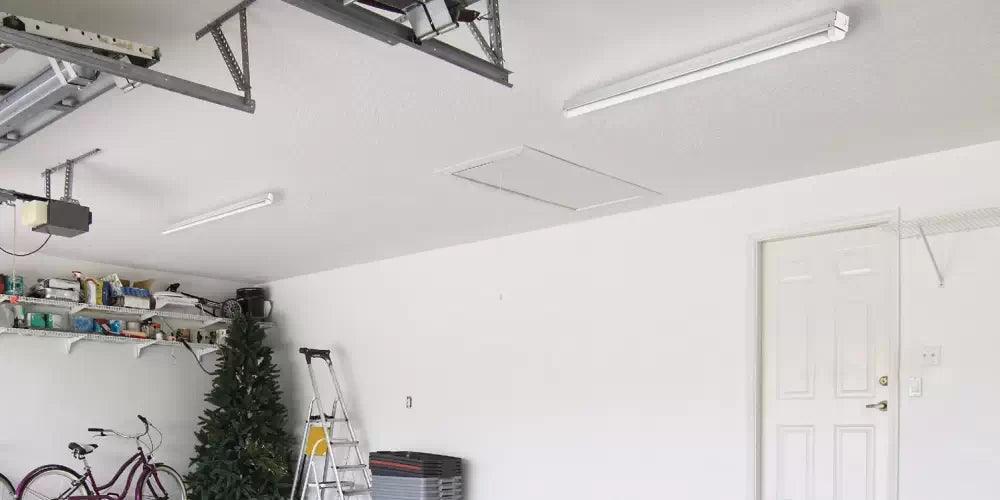The revolution of lighting technology has led to the rise of LED (Light Emitting Diodes) lighting, replacing traditional fluorescent bulbs. This article will unravel the intricacies of converting fluorescent lighting to LED, discussing the benefits, considerations, and how-to steps to perform a successful LED retrofit for fluorescent.
Why LED Over Fluorescent Lights?
LED tubes offer significant advantages over traditional fluorescent ones:
- Energy Efficiency: LED lights convert most of the electricity they consume into light, wasting only a small percentage as heat. This leads to energy savings of up to 30-50%.
- Longevity: LED tubes last up to 50,000 hours, which is around 80% longer than standard fluorescent bulbs.
- Safety: Unlike fluorescent bulbs, LED lights do not contain mercury, making them safer for the environment.
Understanding Fluorescent Tube Sizes for LED Retrofitting
Fluorescent fixtures are usually mounted into ceilings and connected directly to mains electricity. Hence, it is often more economical to retrofit the existing fluorescent fixture with LED tubes. Here's an explanation of the common fluorescent tube sizes:
- T8: These are the most commonly used type today, measuring 48 inches in length with a 1-inch diameter.
- T12: These are less efficient than T8 lamps, with the same length but a larger 1.5-inch diameter.
- T5: These are typically the most efficient and some of the newest types of lamps introduced in the 2000s in the USA. They are slightly shorter than four feet and are commonly used in non-ceiling fixtures such as table lamps.
LED tube lights adopt the same form factor names (e.g., 4-foot T8 LED tube light) and replicate the mechanical dimensions for retrofit replacements. However, T5 fixtures are NOT cross-compatible with T8 and T12 lamps due to their different pin sizes and actual lengths.
Fluorescent Ballasts and LED Retrofitting
All fluorescent tube lights use a device called a ballast to control the lamp's brightness as it warms up. LED lamps operate differently and do not require a ballast but utilize electronic components that make up the LED driver. This discrepancy led to the development of various types of LED tubes, namely:
- UL Type A - Ballast Compatible: These LED tube lights are designed to work with fluorescent ballasts, allowing a simple replacement of the fluorescent tube without rewiring the fixture.
- UL Type B - Ballast Bypass: These LED tubes are incompatible with fluorescent ballasts and must be connected directly to mains electricity. They can be categorized as single-ended or double-ended.
- UL Type C - Remote Driver: These LED tubes require a separate LED driver device connected between the LED tube and mains electricity. They offer the most flexibility and efficiency for a lighting system.
Shunted vs Non-shunted Tombstones
Tombstones are the "sockets" or lamp holders that the LED tube lights will be installed into. They can either be shunted (both contacts connect to the same electrical polarity) or non-shunted (one contact connects to live, the other to neutral). It's crucial to determine your LED tube light's compatibility with the tombstone configuration in your fixture.
The Conversion Process
The process of converting fluorescent lights to LED involves several steps, including:
- Safety Precautions: Always ensure safety when performing lighting upgrades. Wear safety glasses and work gloves, and always shut off the power source before commencing work.
- Considerations: Take into account factors like compatibility with fluorescent lamp ballasts, cost, maintenance, and heat emissions.
- Replacing the Lamp Holders: Disconnect the wiring connecting the fluorescent fixture ballast, remove the ballast, and replace the existing shunted lamp holders with non-shunted ones.
- Wiring the Fixture: Connect the positive lead to one of the leads on the marked live end and wire the negative lead to the open lead on the live end side of the lamp holder.
- Installing the New LED Lamps: Mount the lamp holder to the ceiling box and tighten the mounting screws.
- Restoring Power: Once the LED lamps are in place, complete the retrofitting by turning the power back on.
LED Retrofit Kits
LED retrofit kits like the Magnilumen Magnetic Retrofit Kit offer an easy and cost-effective solution to convert your existing fluorescent fixture to LED. They come with all necessary parts including LED tubes, non-shunted lamp holders, solid copper loop wires, sets of solid copper connecting wires, and wire nuts.
The Retrofitting Costs
While LED tube lights have become competitive in price, labor costs for electrical rewiring can add significantly to the initial costs of the project. However, by choosing LED tubes that are compatible with any potential electrical configurations in a fluorescent fixture, you can save on these labor costs.
Making the Switch to LED Lighting
With the numerous benefits and growing popularity of LED lighting, it's an excellent time to consider making the switch from traditional fluorescent lighting. Whether you choose to modify your existing fixtures or replace them entirely, LED retrofitting is a sustainable and cost-effective solution for your lighting needs.





